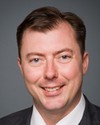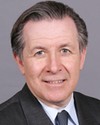Thank you, Mr. Chairman.
My name is Don Ethell. I'm appearing here for the Gulf War Veterans Association of Canada as their honourary chairman, but I'm also a member of the CAVUNP as well as their past national president and current liaison officer. I've lived with this issue for the better part of 10 years.
Why am I the honourary chair? I didn't serve in the Persian Gulf, but I was in Tel Aviv and other places where the Scuds were landing, and the Gulf War association president said that since Jeff Bentley couldn't make it because of duty in Cold Lake, that was close enough and I was now their honorary president. That's why I'm here.
In the minds of many soldiers, as indicated by my colleague, this bill is extremely important to those of us who have worked diligently throughout the years for this day and look forward to the day this bill is passed in Parliament.
As Ron has said, the Nobel Peace Prize was awarded in 1988. A selected multi-tour veteran who was not an officer, Master Corporal Docksey, represented the Canadian Forces at the ceremony in Norway.
Where did this peacekeepers' day initiative get started? To be quite frank, it started concurrently in Victoria, with members from the Canadian Peacekeeping Veterans Association, and in Calgary, with our association. We had this idea that there should be a designated day. To cut it short, in the case of Calgary, they convinced the Province of Alberta to recognize it, then the City of Calgary, the City of Victoria, the Province of British Columbia, and it spread across the country. Manitoba and Saskatchewan came on board, and other chapters in CPVA, in the case of New Brunswick.... Eventually all the provinces recognized this as peacekeepers' day, as did the cities of Halifax, Toronto, Montreal, Barrie, Winnipeg, Vancouver, and of course Calgary.
Now is the time for federal recognition.
As mentioned by my colleague, this is not to be confused with Remembrance Day. It's an indication of recognition. We're not looking for a federal holiday per se. It's recognition, and August 9 is stepped off from November 11 sufficiently to prevent any confusion in that regard.
In our opinion, peacekeepers and peacekeeping operations are part of peace support operations, which include peacekeeping, peace maintaining, peace restoring, humanitarian operations, reconstruction, and occasionally elections, so we use that term. The reason I mention it is that as far as we're concerned, on the Wall of Honour in a number of places in Canada the 168 names of the people who have been killed to date since Acting Brigadier Angle was killed in Kashmir in July of 1950 include the 54 people who have been killed in Afghanistan, and that's why we use that all-encompassing term. If you say it's not peacekeeping, it's war--well, in an undeclared war it's still in accordance initially with UN resolution 1707, and since December of last year, it's also in accordance with a United Nations resolution.
So as Ron has indicated, in our opinion, all those organizations--the ECMM, the MFO, the ICCS, for that matter, in Vietnam, the NATO peacekeepers in the Balkans, and our lads and ladies in Afghanistan--are included in that peace support operations definition. In our opinion, they are peacekeepers.
People say it's a war and it's not peacekeeping. I respectfully remind people that we've been involved in wars before, even though we've had blue berets on, in the Congo, in the Medak pocket in the Balkans, and when we fought the Turks for control of Nicosia airport after the Turkish invasion, taking casualties and suffering casualties on both sides. The Airborne Regiment in fact won that battle.
Why was August 9 chosen? As indicated by my colleague here, it was on August 9 that the aircraft was shot down. It had taken off from Ismailia and went up the coast of the Mediterranean; it had stopped at Beirut and was inbound and had clearance to land when three missiles struck it. The pilot was able to dodge the first missile. The second one hit an engine, and the third one took off the tail; obviously, they were all killed.
The Syrians wouldn't admit--and still don't admit--fault, because they thought it was an Israeli attack aircraft. It's a little awkward to buy that, but that was their interpretation.
In my time in the Middle East as the senior liaison officer for the UN between the Syrians and the Israelis, I got to know the senior Syrian Arab delegate officer very well and could never get an admission out of them that they had made a mistake. He said, “Well, the battery commander no longer is in command. He's gone to join his grandfather.” You can picture what that means, at least in the Arabic world.
A number of us have been to the site. It was out of bounds for many years. Prior to the withdrawal of the Canadians from the Golan a year ago, the contingent had permission to go over and have a ceremony. I don't think any of the surviving relatives have had an opportunity to visit the site, just outside a little town called Dimashq.
The remains of those Canadians.... By the way, the two members of our Calgary chapter, retired Lieutenant Colonel—then Lieutenant—Rick Wright, was the signals officer and was on the net when they had dead air and they didn't know what had happened to the aircraft. Obviously, the Canadian movement control people in Damascus were able to finally pass the word back that the aircraft was missing. Another, a member of the Ottawa chapter, a sergeant retired, is Chief Warrant Officer Bruce Reid, who in fact assisted in the loading of the nine ammunition boxes onto the weekly resupply Herc that came down from Germany to pick up those remains. So it's near and dear to our hearts, August 9.
I mentioned the proclamations. I have left with the clerk samples of some of the proclamations: Manitoba, New Brunswick, Calgary, of course, and a couple of others that you may want to look at. I'm sure somebody, if this bill is passed, will come up with a proclamation that's suitably written.
I'd be remiss if I didn't include mention of the Canadian National Peacekeeping Monument here in Ottawa. That was built by retired Colonel John Gardam, a grand old soul. It took a long time to convince the NCC, the National Capital Commission, and others to build it, and we had a massive parade there in the month of October, with contingents to honour all those who have passed. John, the curator, advises that if this bill is passed, or when this bill is passed, they're going to switch their anniversary parade from October to August 9.
As a little personal note on Calgary, I would like to mention that there are two parks in Calgary in one of the redevelopment locations of ex-Canadian Forces Base Calgary. In Garrison Green there's a Peacekeepers Park between Canada Lands Company, assisted annually from Veterans Affairs Canada and ourselves. We raised the $1.6 million to construct this park, with a wall of honour listing 168 names. In fact, the last 22 are being engraved, now that the warm weather is here, in time for the ceremony in August. The second wall is the wall of all the missions, with the missions engraved. To the right is a larger-than-life bronze statue of an “armed”—and I emphasize that word—peacekeeper handing a little doll to a waif. That park was dedicated in 2004.
The second park was built about 400 metres away from this park, and it's called Buffalo Park. We scrounged a propeller from the air force. It was a non-serviceable propeller I think, and it was mounted on a pedestal. There's a pedestal there describing the incidents of August 9, 1974, and listing all of the relatives. We in fact raised the funds to fly in 38 surviving relatives, to pay for their accommodation and transportation. That park was dedicated by the then Minister of Veterans Affairs, Albina Guarnieri, who unfortunately had to stay here because Smokey Smith had to be received here. So we carried on without her. We're very proud of that park.
Secondly, the City of Calgary has renamed all 13 streets within the area after renowned peacekeepers, living and dead: Dallaire, MacKenzie, Tom Hope, and Corporal MacLean, who lost his two legs in an accident in the Sinai on his last day; he had his legs blown off. People like that. Bruce Henwood had his legs blown off in Kuwait. So that's quite an honour in regard to the peacekeepers.
I mentioned the ceremony in 2005. Last year, the current Minister of Veterans Affairs officiated, the Hon. Greg Thompson. Once again, we had the Buffalo aircraft from 442 Squadron in Comox fly over. In fact, we wanted nine parachutists from the Canadian parachute team; unfortunately, there was wind shear, so only four of them made it down...sorry, the other five didn't jump. Don't get me wrong here; there were four who came out in the first drop and then they had to stop. It was very spectacular, a very emotional day, as it is every year, particularly for the surviving relatives, not only of the Buffalo nine, as we call them, but the others who have lost families, not the least of which is Professor Goddard, who lives in Calgary, and others.
I have left sample copies of the programs we have there. I know this is sounding personal, when I'm talking about Calgary, but it's very near and dear to our heart.
To finish off, we, of the Gulf War Veterans Association of Canada, fully support this bill. To use a term we heard yesterday in another meeting, this certainly adds value in recognition of the veterans. I thank you.


